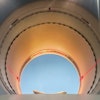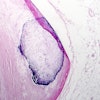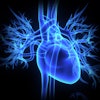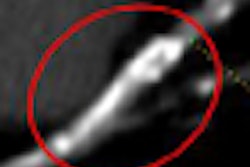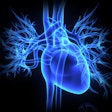Dear Cardiac Imaging Insider,
Considering today's laserlike focus on radiation dose in cardiac imaging, it bears repeating that machine readouts and other traditional dose calculations don't actually measure the effect of the exam on the patient. What these measures do is estimate -- roughly -- the patient's exposure to ionizing radiation, not the absorption or the tissue damage caused by it.
But a new era of biological measurements is dawning, say researchers from Germany who are measuring the direct effect of radiation on their cardiac imaging patients.
Recently, measuring DNA double-strand breaks in blood lymphocytes has emerged as a promising and highly sensitive technique that's remarkably easy to perform on blood withdrawn from patients before and after imaging exams.
With the aid of γ-H2AX immunofluorescence microscopy, researchers from Erlangen and Saarbrücken, Germany, are able to measure the actual DNA damage caused by radiation and compare it to commonly used dose estimates.
They applied the technique to low-dose sequential scanning versus spiral CT, and to patients undergoing CT angiography (CTA) under a variety of conditions. Look for their engaging results in this issue's Insider Exclusive, brought to you before it is made available to our regular AuntMinnie.com members.
In other news, a study measuring radiation exposure the old-fashioned way found that sequential scanning significantly reduced the dose of the so-called triple rule-out exam being used with increasing frequency for patients with chest pain. The scan, with its longer anatomic coverage versus traditional CTA, has been scrutinized for its comparatively heftier radiation doses.
Of course, traditional CTA benefits from the use of prospective gating as well, according to another study that confirms the results of previous papers. And a newly published study from the University of Pennsylvania shows just how helpful coronary CTA can be in identifying coronary artery disease in low-risk patients.
Meanwhile, in SPECT, authors of a controversial new study in the Journal of the American Medical Association found a low rate of inducible ischemia in asymptomatic individuals with type 2 diabetes, and, as a result, said the routine use of screening cannot be recommended.
But an AuntMinnie.com contributor counters in a Second Opinion that the researchers used the wrong test on the wrong group of patients. Nevertheless, a third study by Italian researchers found that gated SPECT is the best predictor of future events in patients with known heart disease, according to a story by AuntMinnie.com staff writer Wayne Forrest.
In echocardiography, AuntMinnie.com staff writer Erik L. Ridley reports that critically ill patients who received contrast were actually less likely to die, at least in the short term, than those who had noncontrast studies.
Be sure to scroll through the stories below for more exciting coverage in your Cardiac Imaging Digital Community.
